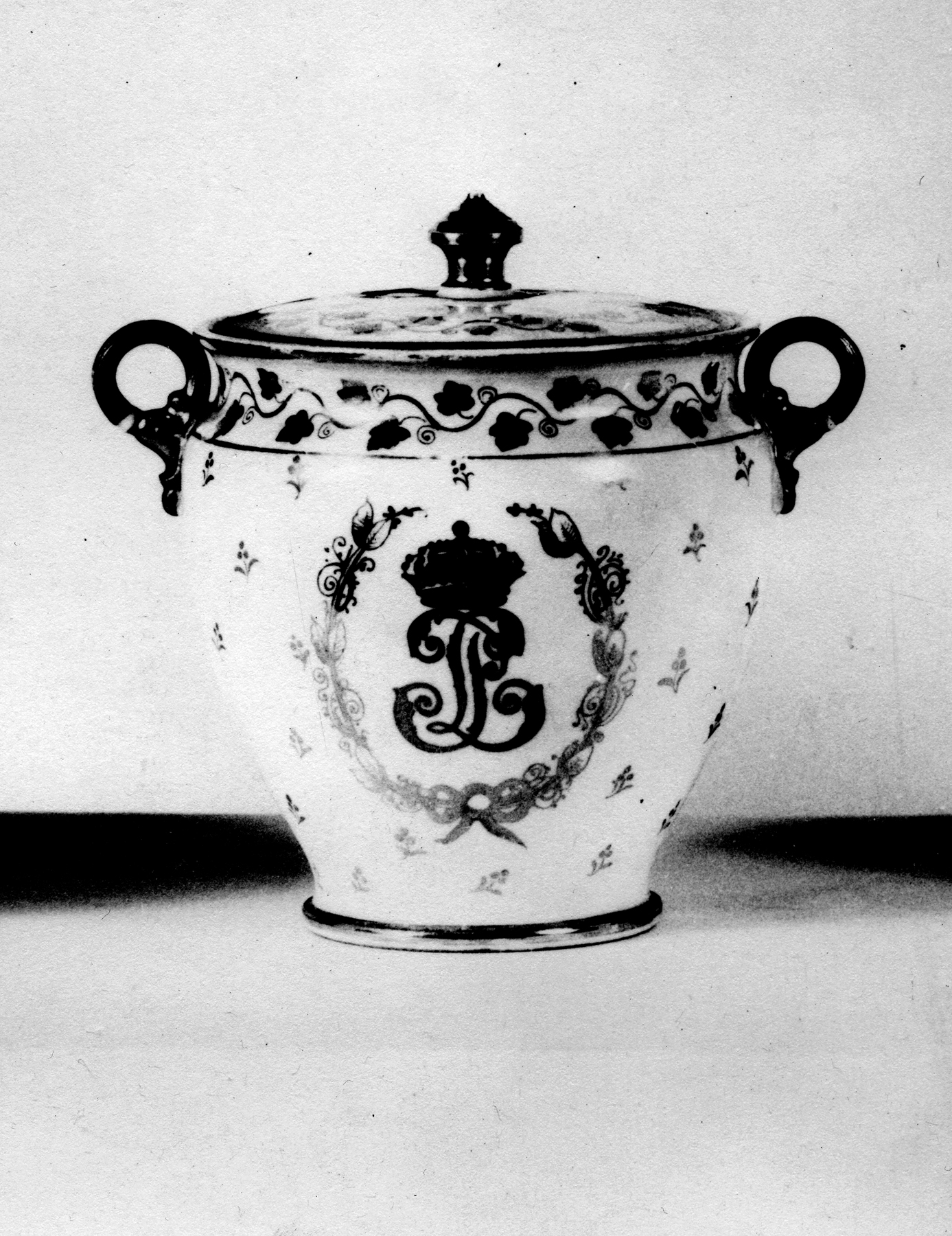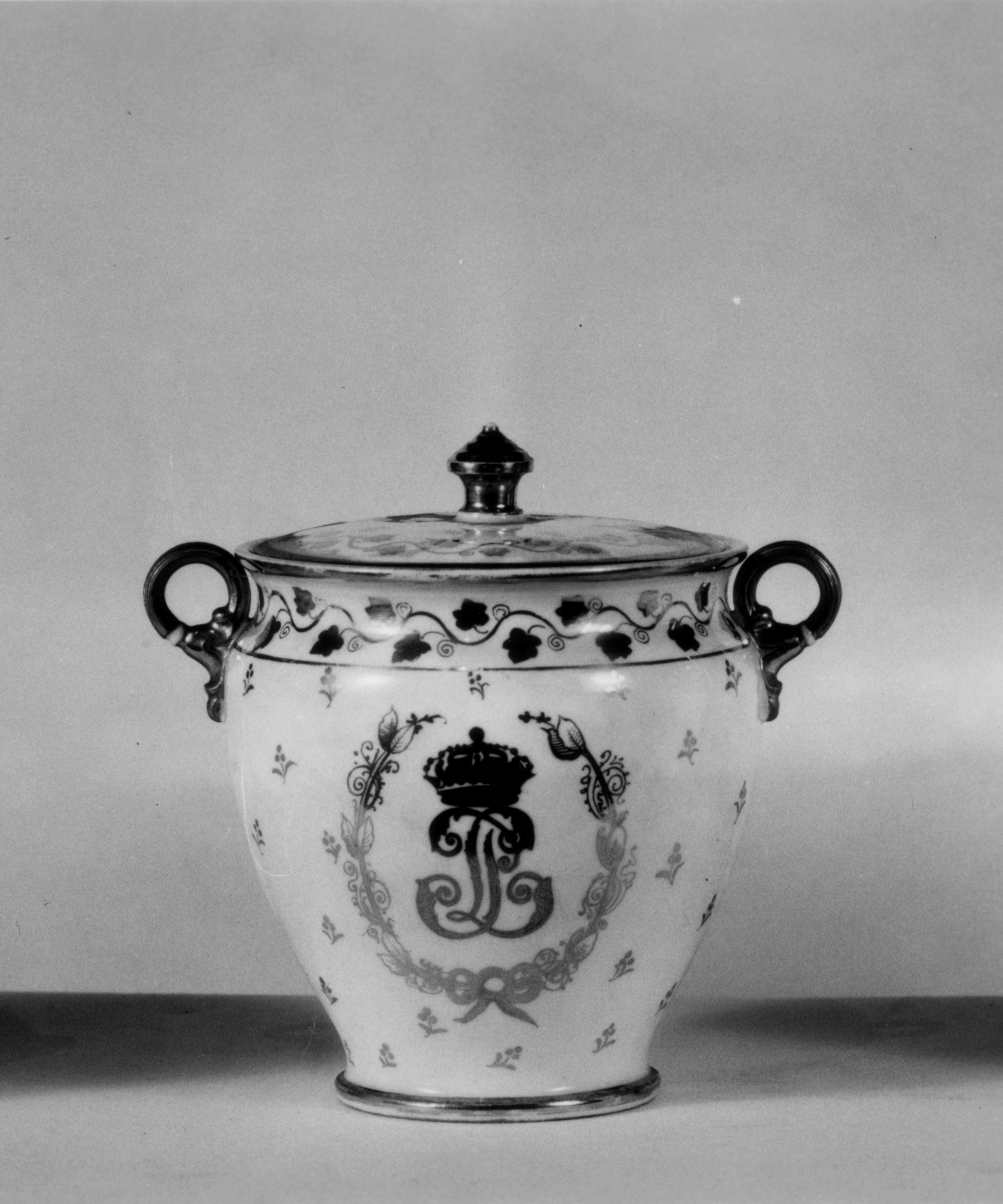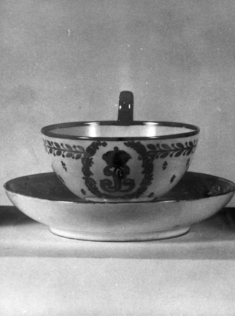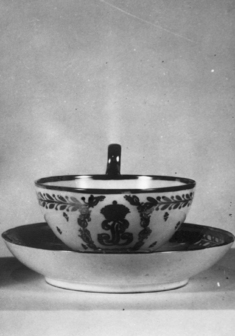Sugar Bowl and Cover
Sèvres Manufactory produced this Neoclassical sugar bowl as part of a tea service for Louis-Philippe, King of France from 1830-1848. The service consisted of a matching coffeepot, teapot, sugar bowl, milk jug, and multiple sets of cups and saucers. The Walters Art Museum’s collection includes the teapot, sugar bowl, milk jug, and two cups and saucers. The sugar bowl would have held refined, white chunks of sugar that had been imported from the New World. The porcelain service is ornamented in gilding, giving each piece a jewel-like appearance. Louis-Philippe’s crowned monogram, encircled by bound branches of oak and laurel, takes a central position on each piece. Vines of ivy ring the top of the vessels, while flower blossoms are scattered across the porcelain’s white ground.
Louis-Philippe abolished the practice of the Grand Couvert, the ritual of the King and Queen eating their meals before an audience as a way to reinforce hierarchy. However, he continued to use meal time to call attention to status by commissioning Sèvres to produce different porcelain services for the various ranks in his household. Each royal residence had its own set of the different services. The pieces in the Walters’ tea set are examples of “le service des princes,” the Sèvres service used by the King and his family during visits to the Chateau de Compigne, a property northeast of Paris.
Inscription
Geographies
France, Sèvres (Place of Origin)
Measurements
Overall Bowl & Cover (A & B) H: 4 15/16 in. (12.6 cm); Bowl (A) H: 4 1/4 × W with handles: 5 1/8 × Max D: 3 15/16 in. (10.8 × 13 × 10 cm); Cover (B) H: 1 1/16 × Diam: 3 7/16 in. (2.7 × 8.7 cm).
Credit Line
Acquired before 1931
Location in Museum
Not on view
Accession Number
In libraries, galleries, museums, and archives, an accession number is a unique identifier assigned to each object in the collection.
In libraries, galleries, museums, and archives, an accession number is a unique identifier assigned to each object in the collection.
48.536








